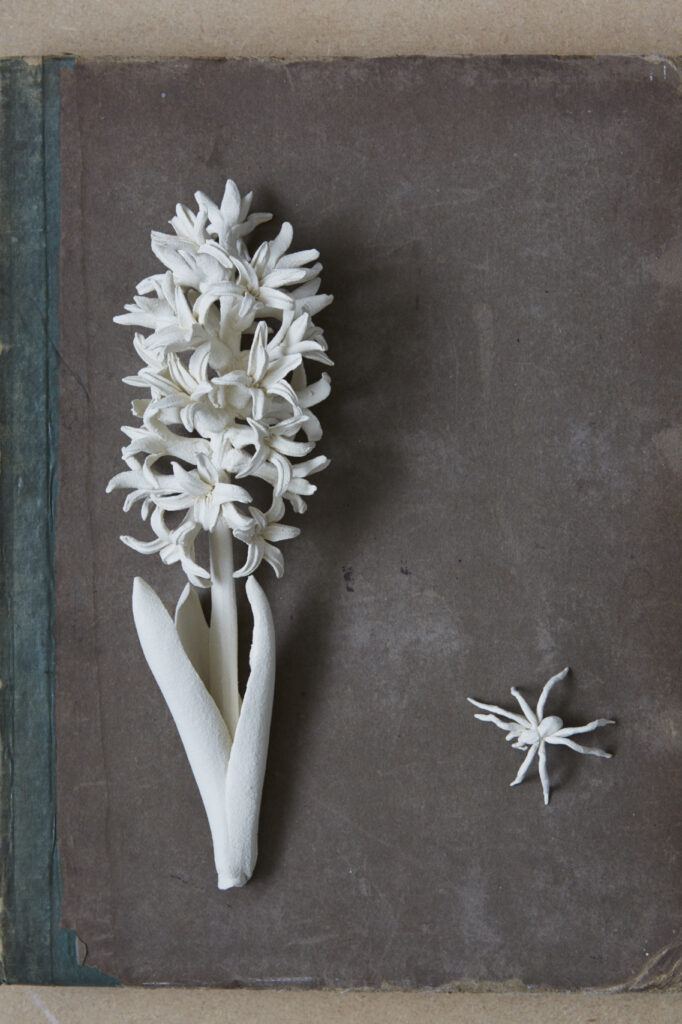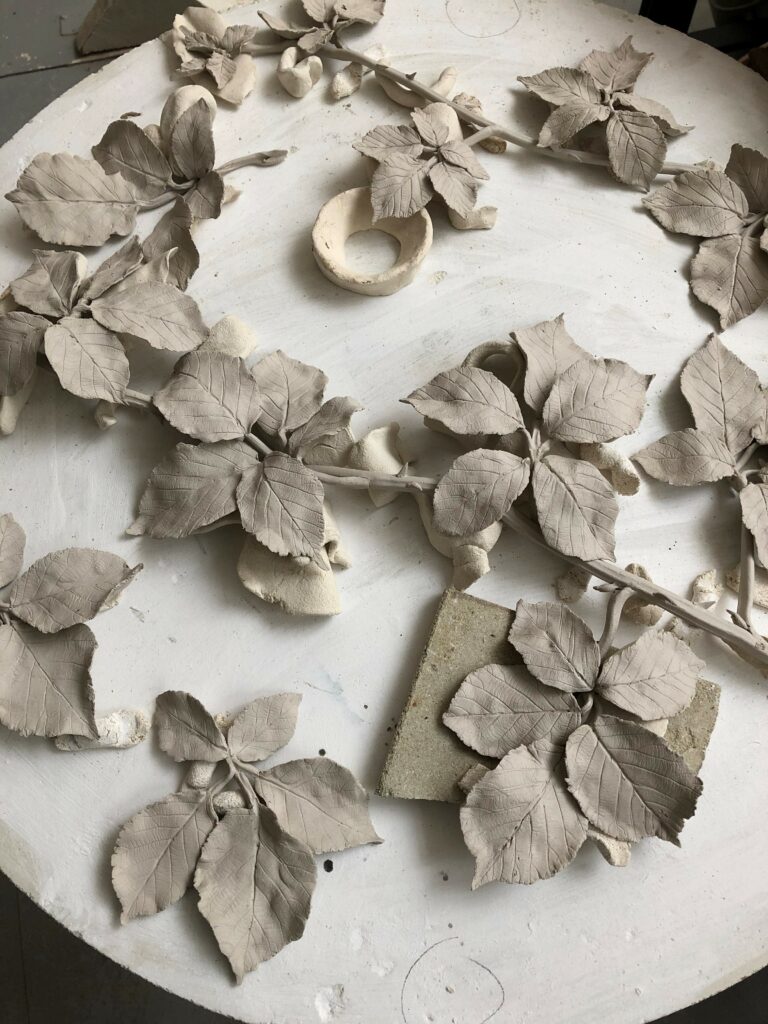Ceramicist Kaori Tatebayashi was born in Arita, Japan, the home of traditional Imari porcelain. Now based in South London, Kaori creates delicately lifelike sculptures of plants and flowers, often based on those grown in her garden. We chatted with Kaori to find out more about her work, and the ceramic bramble she created for our Constance Spry exhibition, branching across a wall out of a Constance Spry Fulham Pottery vase:

Since my birth, I was surrounded by creative people, my family is all creative in one way or another. My grandfather played violin, was a rock climber and passionate gardener, he bred and named some wild orchids from the local mountain in Arita. My grandmother was an amazing cook and kimono maker, my uncles are fishing experts, my mother used to be a china painter, father is an architect, and my cousins play in bands.
Ever since I was old enough to talk, I was telling people that I would become an artist. I spent most of my school holidays in Arita at my granny’s and played in the wild with my cousins. I don’t remember us being given any toys to play with, all we had was nature out there, the woods, the streams, the sea, the quarry (for porcelain) were our playground. Obviously I was greatly inspired by the ceramics my family were trading, but that was at the subconscious level, I noticed it much later in my life. I believe the reason I can be creative and relate to nature and plants so well is because of my upbringing.

I always work from life, not from photographs or memory. I bring the life model/plants into my studio (either grown by myself or sourced from other people’s garden or shops) and place it in front of me on my studio table, observe and then grab a piece of clay and start modelling as if I was doing a life drawing in clay.
Instead of pencil and paper, I use clay and my hands, or a simple modelling tool. I need life models for imperfection. Without observing the real plants and flowers, my work gets too perfect and becomes artificial, resembling silk flowers which I am not at all aiming to create.

I have been working in clay for nearly 30 years now, so I had already obtained all the required skills when I started making the botanical pieces. I don’t know how to put it, but I have an archive of various textures, forms and structures of clay stored in my memory. When I need something specific, I search for it from my archive like pulling out drawers one by one and recall the appropriate technique. It’s like a game each time I come across a challenge.
Each plant has its own charm and becomes my favourite after I have portrayed it. A tricky one was Melianthus Major, its jagged edge leaves were not easy to achieve in clay but I managed!
Out of all the flowers and plants I make, bramble was the most suitable candidate to be in the Constance Spry show. My wall installation is made and fired in sections and I like leaving the composition towards the end so that I can design my installation spontaneously just like making a flower arrangement.

I was asked by Shane Connolly, the curator, to create something for the vase and also informed that the Gluck’s painting would be hanging next to it, so I composed the bramble to grow out from the vase and reflect and speak with Gluck’s painting. Before the exhibition, I knew Spry’s name only as a David Austin Rose. I learned about her through this exhibition and now I am fascinated by her and what she has contributed to the flower world.

I am a passionate gardener just like my grandfather used to be. I try to grow as many of my model plants as possible in my garden because the shop bought plants do not have the same liveliness and imperfection as I like my models to have. I have a dream of having a workshop in the countryside where I can find my models just a step out from my studio.


For now, I am doing a series of commissions for site specific installation which is my favourite way to work. One of them is going to be installed on a curved wall which is an exciting new challenge for me.
—